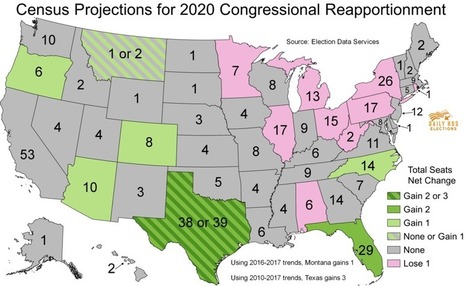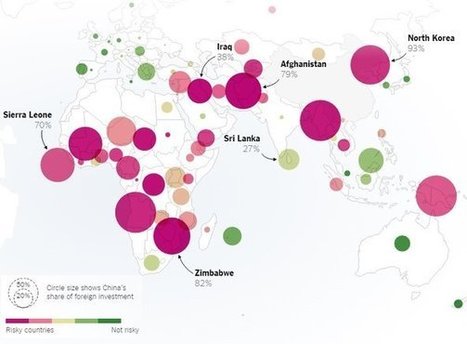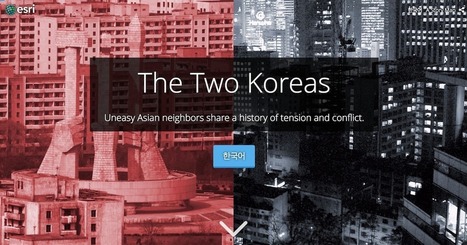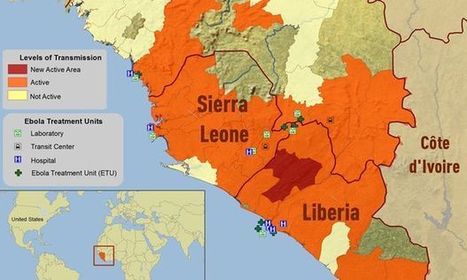the Census Bureau released its population estimates for 2017 for every state, detailing how many residents each state has gained or lost since the 2010 census. The firm Election Data Services has used these estimates to project how many congressional seats each state might gain or lose in the 2020 round of reapportionment, which assigns each state its share of the House’s 435 districts based on its population.
Get Started for FREE
Sign up with Facebook Sign up with X
I don't have a Facebook or a X account

 Your new post is loading... Your new post is loading...
 Your new post is loading... Your new post is loading...

Kristen McDaniel's curator insight,
January 22, 2016 10:57 AM
The NY Times learning blog really has some interesting, insightful lessons. This one looks at using maps to understand culture and history, and how it affects today. 
Jamie Mitchell's curator insight,
March 8, 2016 12:44 AM
Many of the more fortunate students (access to portable electronic devices, multi-car families with parents who drive them around, etc.) are actually worse off in map reading skills in part because they have never needed to develop a mental map and are not adept at navigating their neighborhoods (in the last few generations most and the range that part). When these children become drivers, they are unable to navigate without GPS devices, but they still need to learn map reading skills. They are convinced that their apps can do all the work and that an old fashioned paper map is outdated technology, but their spatial thinking skills become atrophied. Spatial skills are crucial for understanding the world as a global citizen, to understand your local environs and for making scientific discoveries. So teach a kid how to read a map...the sooner the better.

Nora Morton's curator insight,
October 10, 2016 1:54 PM
A fantastic source on how to use maps in the classrooms and questions to help guide students into further exploration. Provides numerous links to help understand the background and various types of maps, samples linking history with current events, and tools to create your own maps.

Tom Cockburn's curator insight,
June 24, 2014 5:51 AM
This will likely resonate with 'first peoples' everywhere |
Stevie-Rae Wood's curator insight,
December 9, 2018 9:10 PM
The two Koreas are polar opposites literally, North and South. The Korean war that took place some 68 years ago never formally ended because they could not come to peace agreements. So the border between North and South Korea known as the DMZ is the most heavily fortified border in the world because tensions still run high. The DMZ is the cease fire line. Both sides fear invasion, however in the current state of things it seems as if the North is more aggressive towards invasion that the South, as the South has found some secret tunnels and fear there's more by the North Koreans. Economically the North is severely behind in the world because of there dictators. While the South has become an economic Tiger thanks to the UN and USA trying to promote democracy in the area.

Matt Danielson's curator insight,
December 12, 2018 3:51 PM
The two Koreas are a great example of how Capitalism, Democracy, and liberty are far better than Communism. Just the difference in light visible from satellites at night in the two countries speaks volumes. The war being technically not over and only under cease-fire always leaves that chance for the conflict to reopen. Though today they are taking major steps toward peace and making moves that have never been done before. The amount of famine and overall sub quality of life in North Korea is mind blowing, and with much of it kept secret its hard to imagine how bad it really is.

Kelvis Hernandez's curator insight,
December 14, 2018 3:54 PM
For the two Korean nations, there are stark contrasts in the standard of living and wealth of the people. While the Korean war began in the 1950's it never formally ended a ceasefire was called and has just not flared up in a massive battle again. The two nations are uneasy with each other having different ideas for what Korea should be, but both nations do want a joint Korea. Looking at a map of the energy consumption by the two nations there is a line between those who have it and those who do not. These two have shown solidarity as well in the Olympics joining as one nation, but tensions will continue to flare for a long time. |














